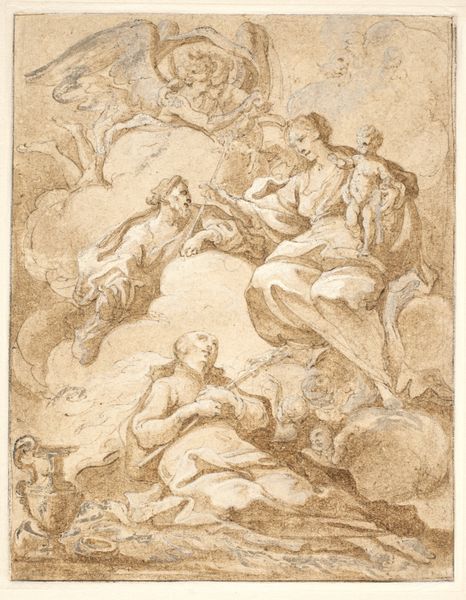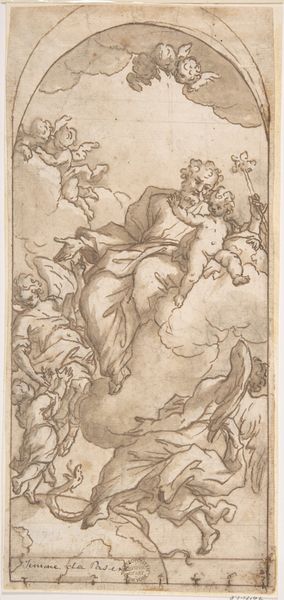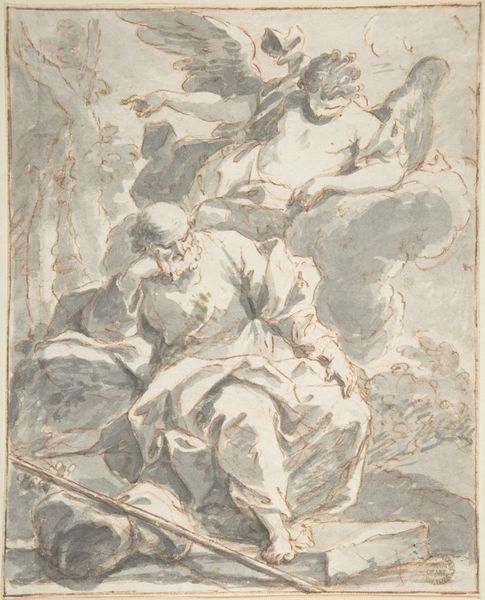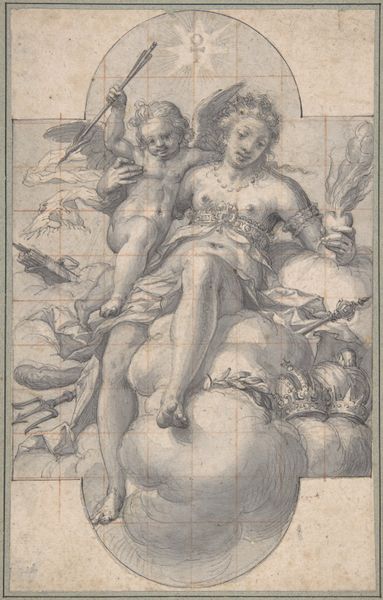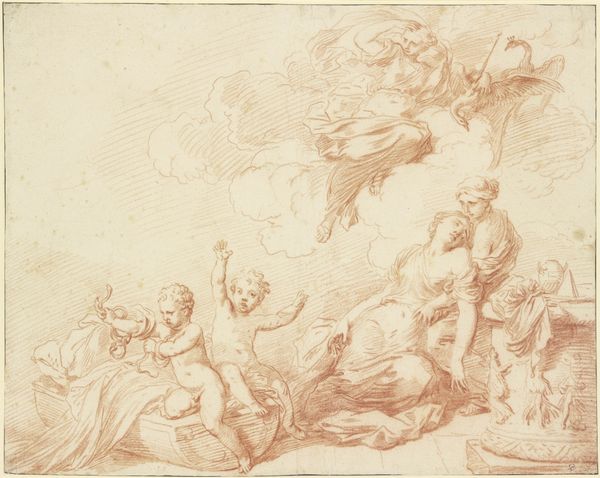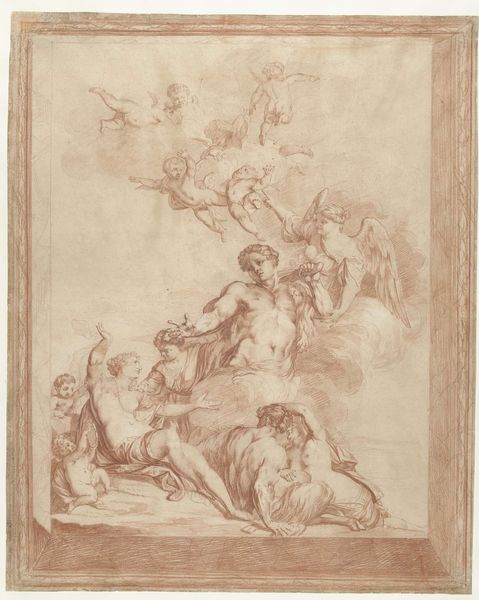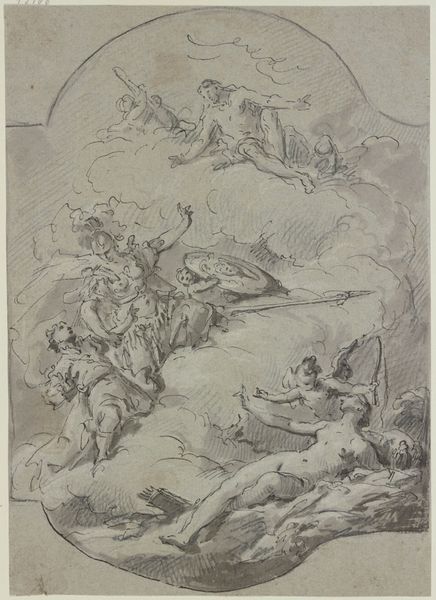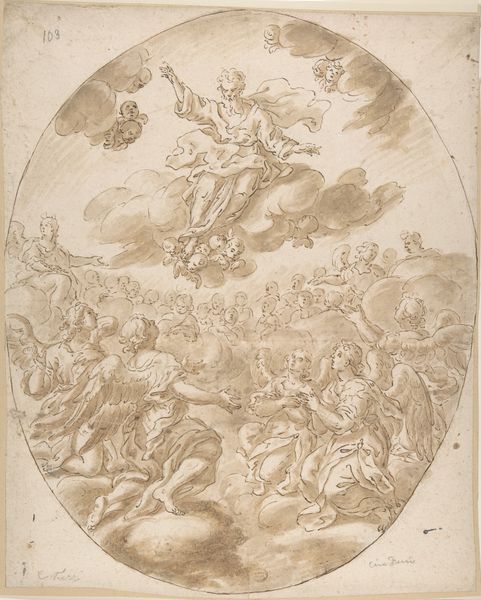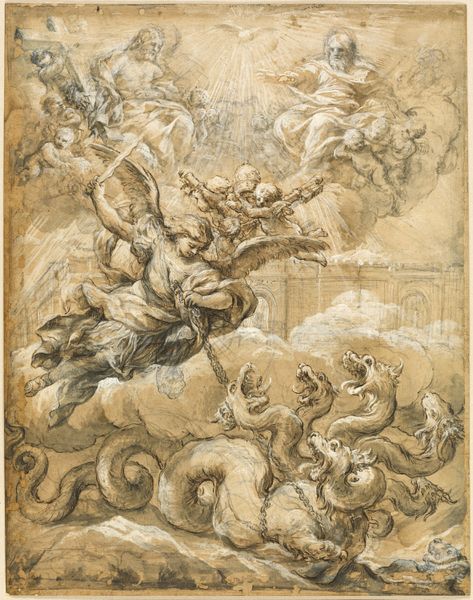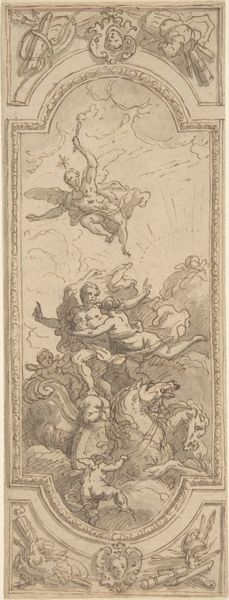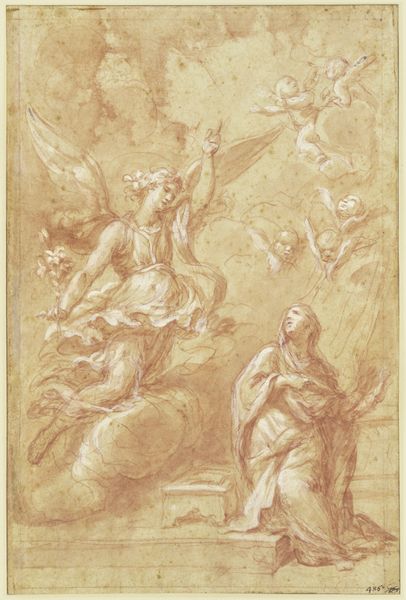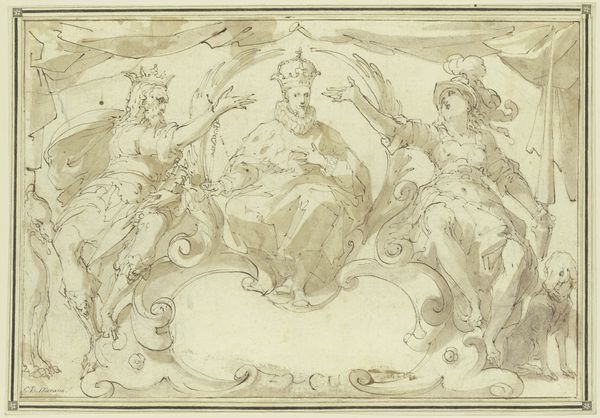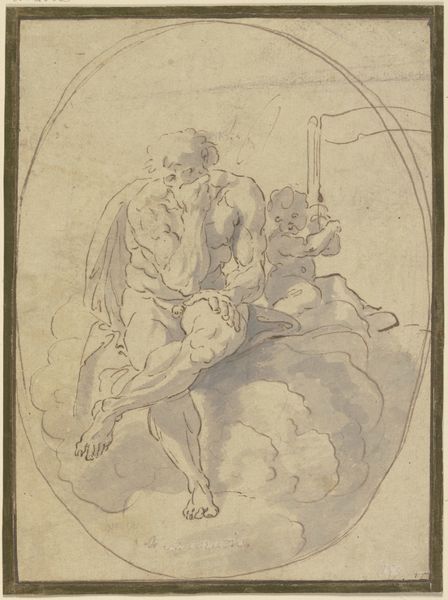
drawing, pencil
#
drawing
#
allegory
#
figuration
#
coloured pencil
#
pencil
#
history-painting
#
academic-art
Dimensions: 10-11/16 x 7-1/16 in. (27.1 x 17.9 cm)
Copyright: Public Domain
Curator: At first glance, the composition of this drawing immediately evokes an ascension, doesn’t it? Editor: Indeed. It feels positively Baroque in its dynamism. We’re looking at an intriguing piece, "Design for a Ceiling Painting", crafted sometime between 1700 and 1800 by an anonymous artist. It's currently housed here at the Metropolitan Museum of Art. The artist used pencil and colored pencil. Curator: It’s more than intriguing; observe the compositional balance—the diagonal thrust countered by the cloud formations anchors the design and creates a stable yet visually stimulating experience. The strategic gridding provides essential perspective, highlighting fore- and background techniques. The work also offers an opportunity to inspect how traditional drawing conventions guide one’s vision and construct the space within. Editor: True, that grid is fascinating. Given the subject matter, it is interesting that you mention the gridding providing that traditional perspective. One has to wonder about the symbols embedded in it, then, no? Clearly, this goddess-like figure represents some form of power or virtue, given her elevated position and the spear or scepter she carries. Note the cherubs attending her. Is she a commentary on leadership, or an idealized depiction of a state, perhaps? The clouds serve as more than mere background; they are steeped in their own cultural, mythological history! Curator: Symbolism aside, the artist's control over the pencil—look at the textures achieved solely through line work! Notice, especially, the drapery enveloping the central figure. And while the iconography hints at allegory, the very skeletal form of a square lends geometric authority to the work; this structural undergird speaks volumes about Baroque art, moving into a new modernizing world. Editor: Fair, fair, the artist clearly exhibits extraordinary skills. Considering that allegories are often used to justify power structures, the artist certainly could have included specific virtues or symbolic markers of prosperity and moral justice. Regardless, it leaves much open for discussion and the composition directs my mind skyward, doesn’t it you? Curator: A testament, certainly, to how art can function both as technical skill and interpretive ground. Editor: An intriguing work overall that shows how a preliminary design captures grand aspirations, as it provides subtle, compelling meaning across many eras.
Comments
No comments
Be the first to comment and join the conversation on the ultimate creative platform.

